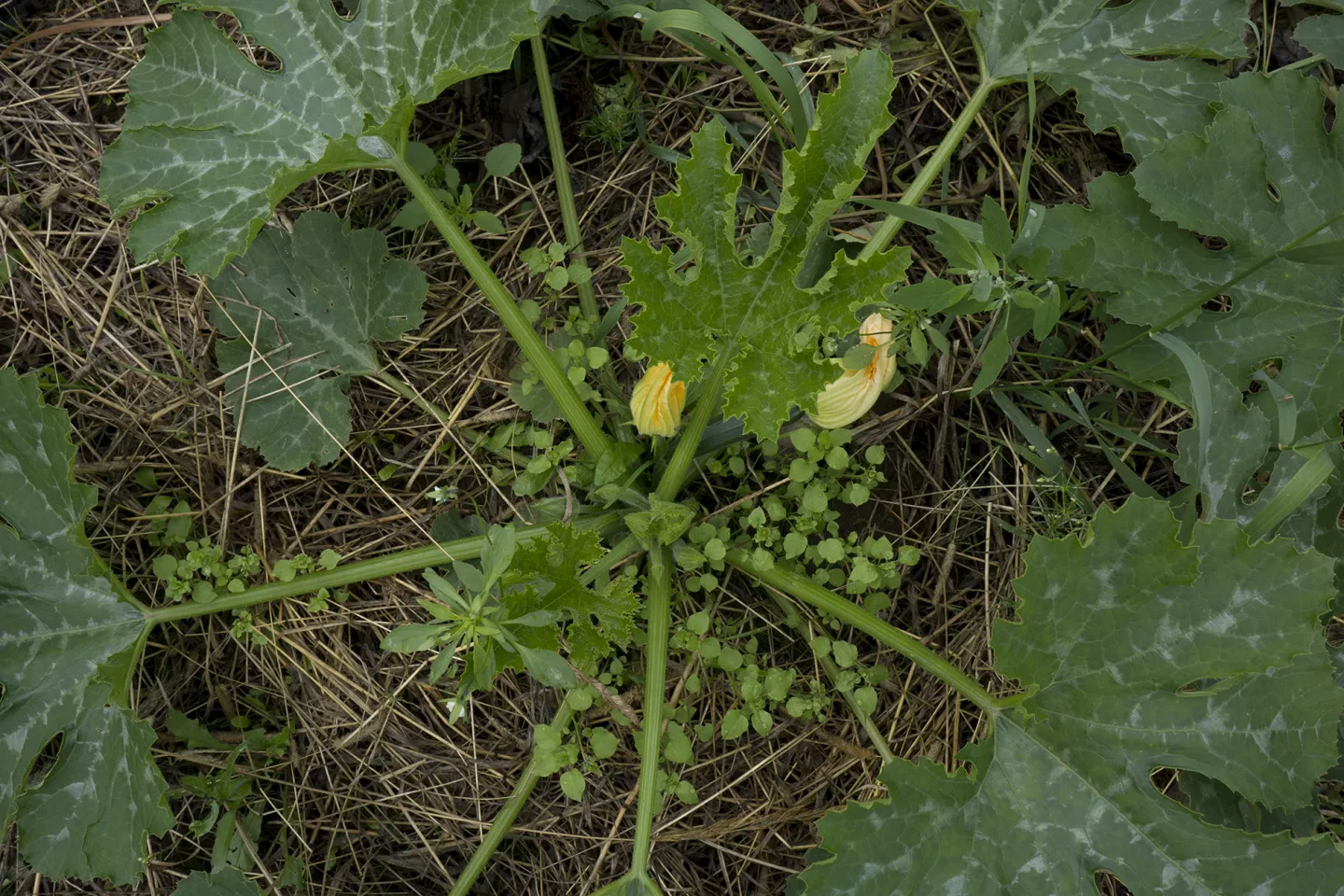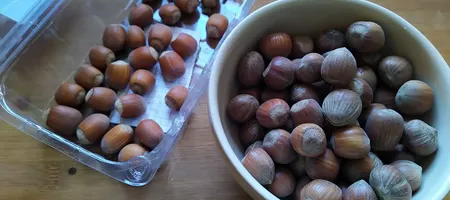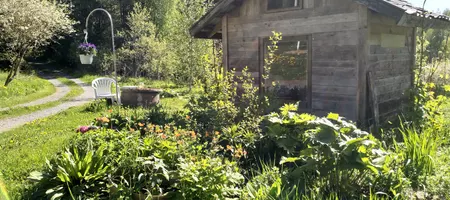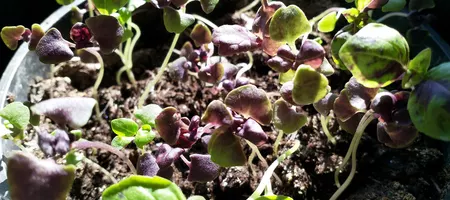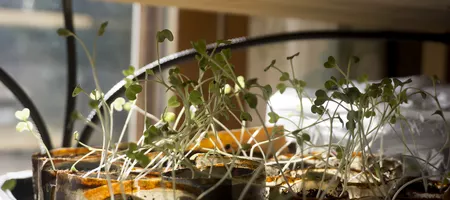When I look at the hardiness map at plantmaps.com our place is right in the border of zones 5a and 5b. Wikipedia defines hardiness zones as an "geographically defined area in which a specific category of plant life is capable of growing, as defined by climatic conditions, including its ability to withstand the minimum temperatures of the zone." For us that means that generally plants that are hardy to zone 5 can be grown and perhaps survive the winter here. Being hardy to zone 5a means the plant must tolerate a minimum temeparture of -28,9 degrees Celcius which is equivalent to -20 degrees Fahrenheit.
Now, that is generally not the best place to be growing squash and pumpkins, but I happen to have a thing for those vegetables so I gow them nonetheless. My Mum has been growing squash since as long as I can remember, as well as so-called winter pumpkin, which is a yellow, big pumpkin – that is all I know of it. Both flourished most years, but some cold summers the harvest has been meager.
What we planted
This year what we planted were pre-grown squash and winter pumpkin as usual in my Mum's garden. Some of the squash was planted into the garden and some on a compost heap, and the winter pumpkin lives on another compost heap. I also brought several seeds of different pumpkins with me from Germany, as most speciality pumpkins are not that easy to get here. What I sowed was
- Black Futsu
- Blue banana
- Butternut
- Hokkaido orange
- Spaghetti
I also sowed some Calabash, also called the bottle gourd just to see what would happen, even though it is more of a tropical plant.
All these seeds I sowed directly into the garden late May, about two weeks after our statistical last frost day.
Now squash and pumpkins are warmth-loving plants and if I had been here before May, I would have pre-grown at least some of these seeds too, to increase the possibility that they have enough time to develop harvest in case the summer is cool. But as it is, I just sowed it all.
Planned planting to avoid cross-pollination
I sowed half of the seeds into our front garden and half into the back garden to avoid mixing the sorts so that I could harvest some seeds also. In the front I have the squash, hokkaido and the futsu. In the back garden (behind a forest-covered hill) I sowed the spaghetti, buttenut and the blue banana.
If you are not familiar with pumpkins and squash reproducing habits here's a short version: there are five domesticated sorts in the curcubita familiy (which itself is a genus of herbaceous vines in the gourd family, Cucurbitaceae). Three of these I have on my field: curcubita pepo, curcubita maxima and curcubita moschata. Here's the trick: pepo will cross-pollinate with any other pepo, but not any maxima or moschata. The same goes for the other two (maxima with maxima, but not pepo or moschata, for example). Domesticated gourds, if left to cross-pollinate will develop back towards their original forms, which almost always seem to be smaller and less tasty for humans. So it's best to try and avoid it. That's why I planted the way I did, see:
Front garden:
Futsu – c. moschata
Hokkaido – c. maxima
Squash – c. pepo
Back garden:
Banana – c. maxima
Butternut – c. moschata
Spaghetti – c. Pepo
That way each garden has only one sort of the each sort and it's rather unlikely it could cross-pollinate with the other pumpkin of the same sort behind the hill – I hope! Professional seed manufacturers usually have much more space between fields but I just don't have that kind of space here!
Mulching
I did not cover any seeds with mulch, but only laid some sheet mulch next to a few of the blue banana seeds. Over the pre-grown squash we erected some tiny hoop houses which we left on for a few weeks until the weather warmed up a bit.
As soon as the different pumpkin seedlings started emerging we started mulching them with dry hay, green clippings of all kinds or sheet mulch (newspaper). I also put some fist-sized rocks next to all the grass-mulched seedlings to create a little microclimate for them.
Insights
The way it looks like now is that the grass-mulched, rock-accompanied pumpkins are coming along the best. Apart from the squash and the winter pumpkin which are looking great and blooming, the Hokkaido looks the best. The Calabash is coming along very slowly. I do not think it can make it to any fruit, perhaps even not blooming. I will keep an eye on them though!
A few weeks ago everything at the back garden looked much worse than the ones in front, but after weeding around the plants heavily and mulching them with dry hay and green mulch they have been looking much better and are catching up to the ones in the front.
We have fertilized the plants in the front once with nettle slurry, the ones at the back have only the mulch. I would like to do that once or twice more this summer. For next year I will see that I get my hands on some horse manure from our neighbor soon, compost it and use it to plant some of the pumpkins on. However interestingly, the squash on the compost heap is not looking much better than the ones on the plain soil. I am very interested in seeing what the difference in harvest will be!
The difference between the winter pumpkin my Mum pre-grew and which lives on the compost pile though is very big to the plants I sowed – Mum's plant is making fruit already whereas mine are not even blooming yet.
I expect to get squash within a week or so. I do hope that the pumpkins start blooming soon though! I can't think of a fall without spaghetti pumpkin from the oven, or hokkaido soup..! A thought too horrid to think about! For now things are looking ok though, I can see buds in the plants and the weather has been moist and rather warm so I am very confident the plants will make some harvest.
How are yours doing?
So this is how I grow squash and pumpkins in our garden in hardiness zone 5a – let me know where you are and how your squash growing differs from mine and if you have any tips for me!




